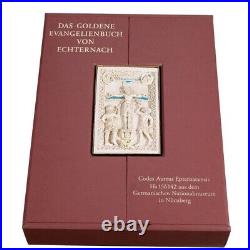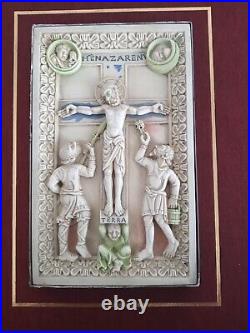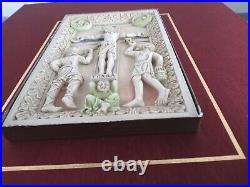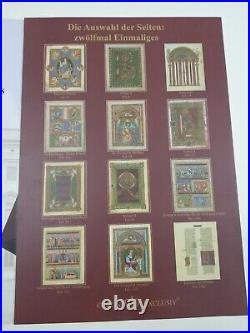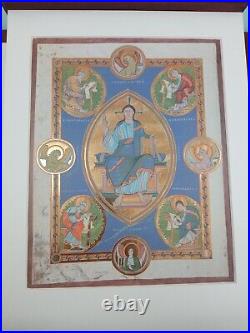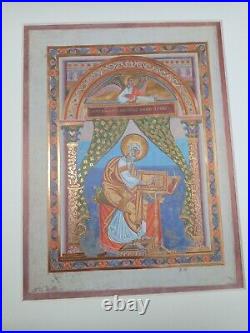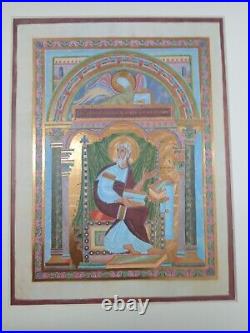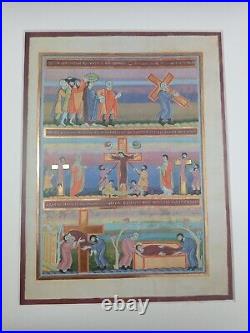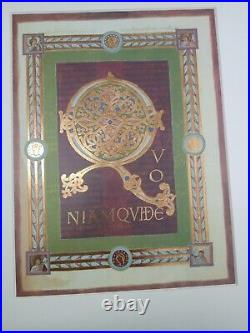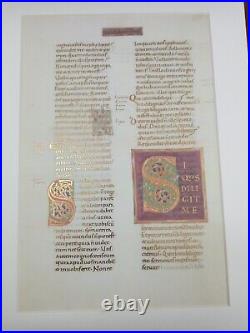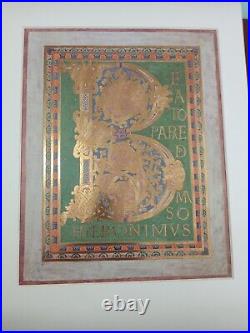
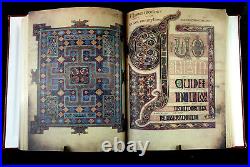
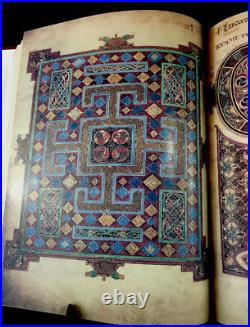
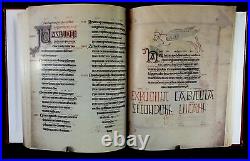
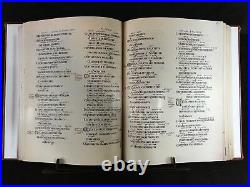
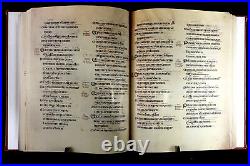
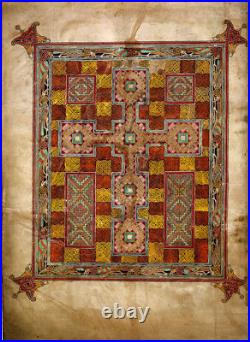
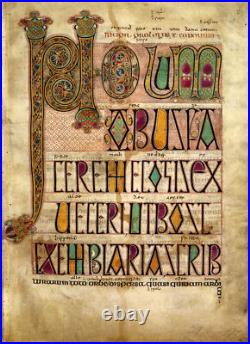
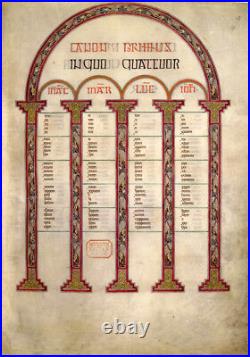
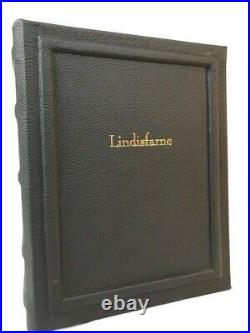
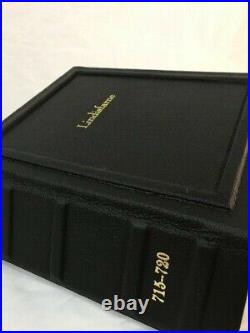
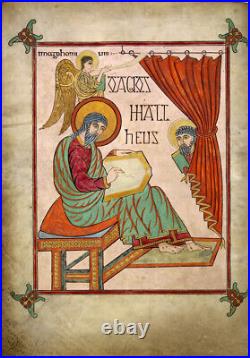

The Lindisfarne Gospels is an illuminated manuscript of the four Gospels of the New Testament, dating back to 700 AD. The manuscript is attributed to a monk named Eadfrith, who became the bishop of Lindisfarne in 698 and died in 721. Commissioned in honor of Saint Cuthbert, the gospels are considered a masterpiece of Hiberno-Saxon or Insular art, combining Mediterranean, Anglo-Saxon, and Celtic elements and was used for ceremonial purposes. The original cover, adorned in jewels and metals, was made by Billfrith the Anchorite, but it was stolen during a Viking raid. In 1852, a new cover closely resembling the original was commissioned by Bishop Edward Maltby. The Lindisfarne Gospels are now kept at the British Library in London, and our reproduction is a hardcover book made with real wood for the interior of the front and back covers and spine. The leather is 4 oz cowhide from a small supplier in North Carolina, adhered to the covers with glue and molded into shape by hand of our local artisans. The signatures/pages are handsewn using a library binding method and the sewn book is bound with a strong adhesive glue that makes the bindings last. We also add a thick mull cloth to the outside of the binding, dried in between each layer, a traditional way to make the binding stiff, strong, and resilient for generations to come. All book will come with a leather of our choice unless otherwise requested. All of our book are hand sewn and made love and care, please realize that we do not import them from China. 100% made in the USA.


